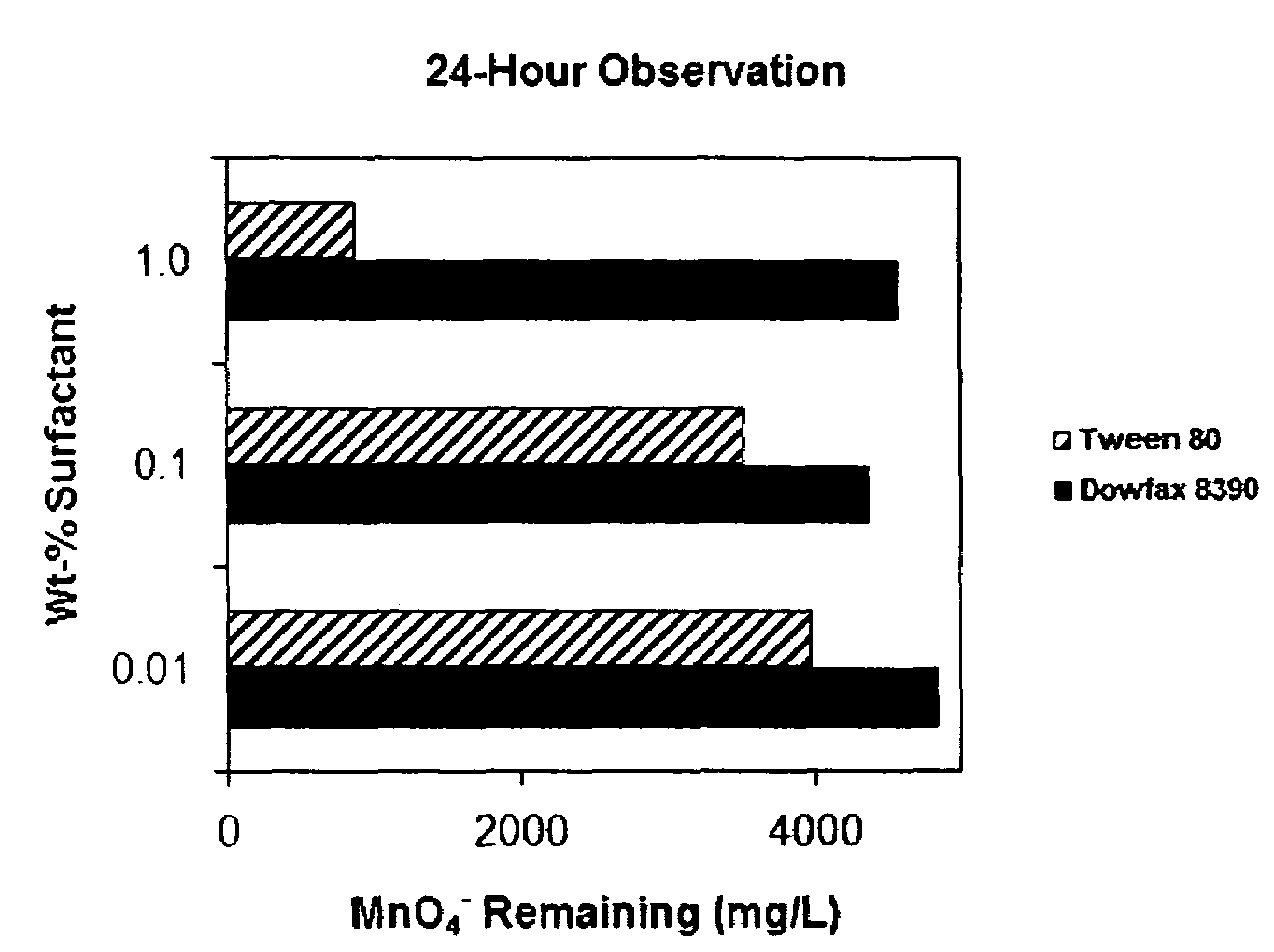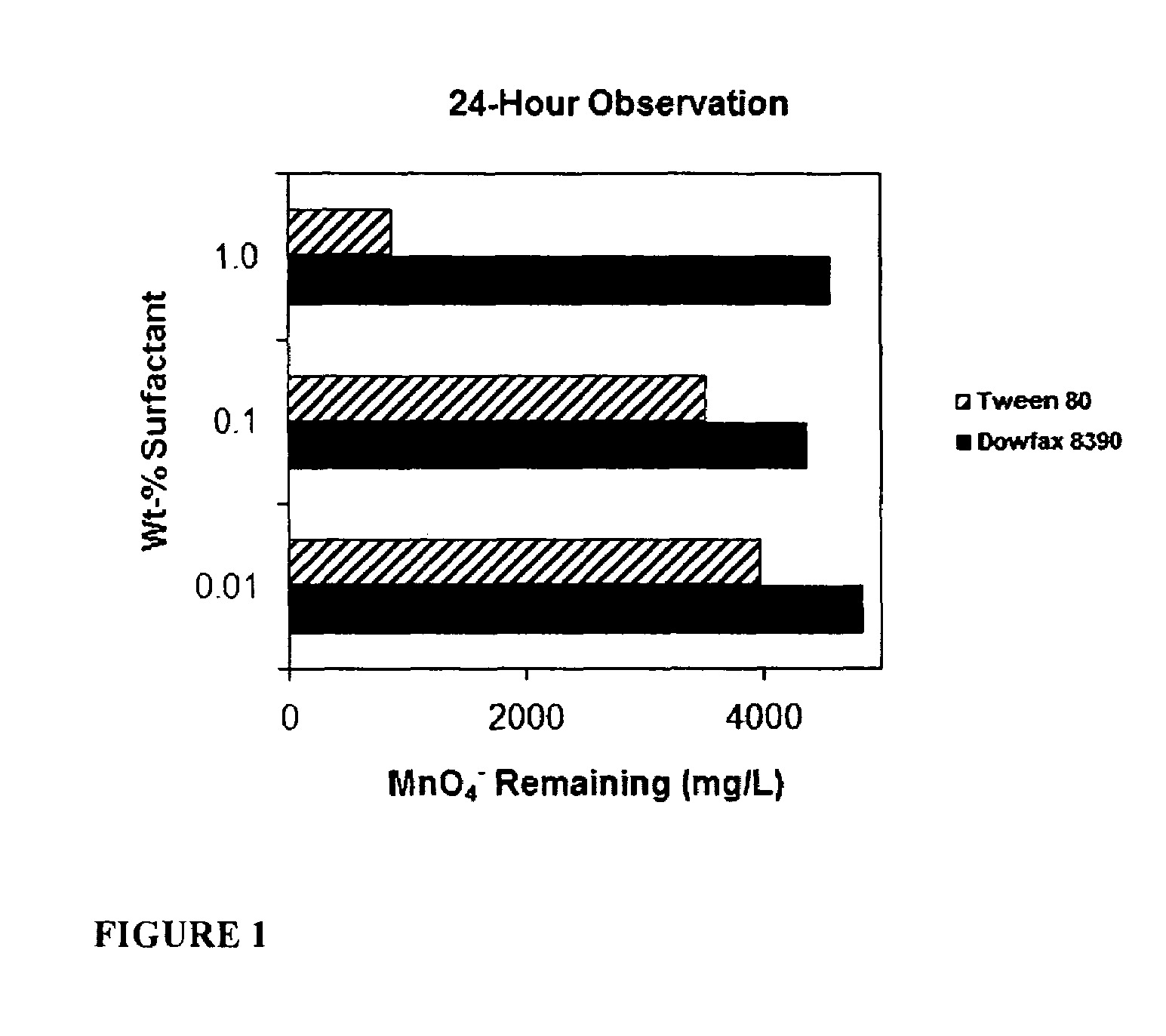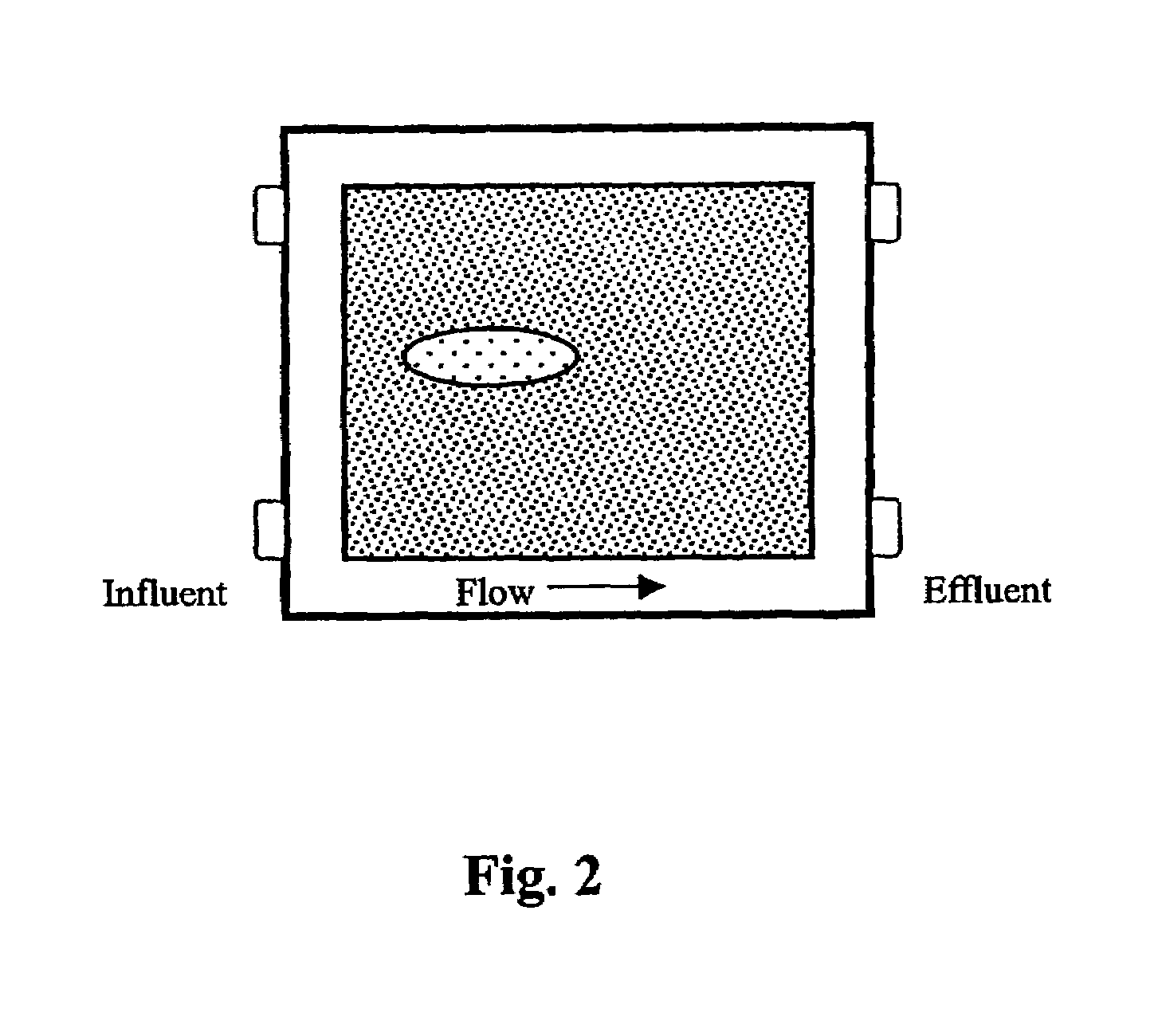Method and compositions for treatment of subsurface contaminants
a technology of subsurface contaminants and compositions, applied in the direction of contaminated soil reclamation, etc., can solve the problems of high inefficiency of water-based contaminant flushing, reduced water quality in the world, and limited performance and cos
- Summary
- Abstract
- Description
- Claims
- Application Information
AI Technical Summary
Benefits of technology
Problems solved by technology
Method used
Image
Examples
example 1
Screening for Compatibility of Surfactants with Oxidants
[0071]The following Example is provided to determine which, if any, surfactants can be combined with an oxidant to oxidize a PCE DNAPL solution. The combinations presented in the following Example are not exclusive but show a correlation between the use of certain classes of surfactants and certain types of oxidants.
[0072]Seventy two surfactants were tested alone or in the presence of cosolvents to determine compatibility with KMnO4. Concentrations for each constituent corresponded to one of two remediation scenarios: (1) a relatively high wt-% of surfactants, i.e., 1-10 wt-%, is coupled with oxidants representative of conditions where a surfactant flush is conducted and followed by one or more water flushes, with high levels of surfactant remaining when the oxidant is introduced (note that this scenario could also represent co-injection of surfactant and oxidant); and (2) a relatively low wt-% of surfactant, i.e., 0.01-0.1 wt-...
example 2
2-D Cell Co-Injection Study to Simulate Subsurface Contaminant Treatment
[0087]The following Example is provided to simulate field testing a composition and method of the present invention for effectiveness on the treatment of DNAPLs.
[0088]The co-injection example was conducted in a two-dimensional (2-D) flow-through cell having dimensions of 30.5 cm×30.5 cm×3.8 cm.
[0089]As shown in FIG. 2, the 2-D flow-through cell has a back panel that contains a 10×10 matrix of 100 sampling ports, each port is spaced about 2.54 cm apart from adjacent ports. The front panel of the 2-D flow-through cell was made of a tempered glass plate to allow observation. The internal void volume of the cell was about 23 cm×17 cm×2.54 cm (993 cm3).
[0090]To prepare the 2-D flow-through cell for use as a groundwater remediation simulation, the internal volume of the cell was wet-packed with de-aired simulated ground water (SGW) that was developed to compositionally simulate natural ground water (Struse A. M. Mass ...
example 3
Compatibility of Cosolvents and Surfactants with Permanganate
[0102]Batch studies were performed to evaluate the compatibility of alcohol cosolvents and surfactants for use with oxidants during treatment of DNAPLs. Studies were conducted to determine the extent of oxidation between permanganate and either different alcohols or surfactants. Primary, secondary and tertiary alcohols were tested, with alcohols showing resistance to oxidation being considered a strong indicator of compatibility in the compositions of the present invention. Batch experimental results for four particularly useful surfactants and one cosolvent are disclosed that are compatible with the oxidant permanganate, as well as 2D cell experimental results for one particularly useful surfactant
Methods:
[0103]The methods described here can be used to identify surfactant / oxidant combinations that can be used, or are preferred, in the methods and compositions disclosed herein. Reaction conditions below indicated a favorab...
PUM
 Login to View More
Login to View More Abstract
Description
Claims
Application Information
 Login to View More
Login to View More - R&D
- Intellectual Property
- Life Sciences
- Materials
- Tech Scout
- Unparalleled Data Quality
- Higher Quality Content
- 60% Fewer Hallucinations
Browse by: Latest US Patents, China's latest patents, Technical Efficacy Thesaurus, Application Domain, Technology Topic, Popular Technical Reports.
© 2025 PatSnap. All rights reserved.Legal|Privacy policy|Modern Slavery Act Transparency Statement|Sitemap|About US| Contact US: help@patsnap.com



